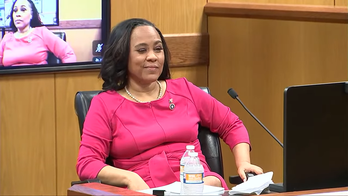It's a question that's asked as casually as "paper or plastic?"
"Cream or sugar?"
"Ketchup or mustard?"
But on the west side of Cincinnati, the crucial question is "Skyline or Gold Star?"
And this is an either-or. Kind of like you either root for the Cowboys OR the Redskins. It's Ginger OR Mary Ann. Mac OR PC.
Skyline or Gold Star.
As in chili. Cincinnati chili. The delightfully, sloppy mess of meat sauce - sans peppers - that's slathered over a bowl of spaghetti. It's topped with a dollop of finely-shredded, Wisconsin cheddar cheese.
A Germanic, Catholic ethos permeates nearly every quarter of life in conservative Cincinnati. But only in the Queen City would no one direct you to the confessional if you told a fellow parishioner you wanted a three-way after mass.
A "three-way" of course, referring to the triumvirate of spaghetti, chili and cheese. It's a staple of the Cincinnati diet. Locals call it a "five-way" if you add beans and onions.
Chili is woven into Cincinnati's fabric as much as Pete Rose, the Ohio River or the city's meat packing industry. And nearly everyone in the Queen City picks whether they prefer the chili served at Skyline or Gold Star, two local restaurant chains that compete against one another.
Skyline's chili is much runnier and not very meaty. The taste is sweet, with hints of cinnamon, cloves and even chocolate (which is said to be the secret ingredient).
Chili at Gold Star is heartier. Meat chunks are common and it has a consistency similar to gravy.
But Cincinnatians know they have to pick one: Skyline or Gold Star.
Just like they'll have to choose on November 2nd.
Rep. Steve Driehaus (D-OH) is pitted against former Rep. Steve Chabot (R-OH) in one of the most-hotly contested races of the midterm election cycle. It's a classic rematch that political handicappers viewed as a bellwether as Democrats padded their majority in the House two years ago. And it's a touchstone again in 2010. Republicans are salivating over a possible Chabot victory shifting the seat back into the GOP column and propelling them to a majority in the House of Representatives.
And just like picking between Skyline or Gold Star, Driehaus versus Chabot is going to be close.
Ohio's First Congressional District covers the majority of the city of Cincinnati. It includes some western suburbs as well as farm country near the Indiana state line. Most Democratic votes come from inside the city of Cincinnati. But the suburbs and rural areas are solid Republican territory. In fact, House Minority Leader John Boehner (R-OH) ceded part of his home county to Chabot after the 2002 census. It was an effort to make the district a little more Republican.
Democrats held the seat for years until Chabot won election to the House in the GOP's 1994 landslide.
After that, Democrats tried in vain for years to unseat Chabot. They noted how Cincinnati would frequently elect a Democratic mayor. Political handicappers often pointed to the untapped potential of African American voters in the city of Cincinnati. In fact, Chabot struggled for years to carry Cincinnati, relying on conservatives outside the city to return him to Washington. When Democrats claimed the House in 2006, Chabot eked out a victory, securing just 52 of the vote. Barely more than a quarter of those who went to the polls in Cincinnati cast ballots for Chabot.
Chabot's 2006 experience made him a leading target in 2008. And Driehaus was a major benefactor of President Obama topping the Democratic ticket. With Ohio as the quintessential 2008 swing state, turnout spiked. Particularly in urban areas. In 2008, voter participation ballooned by nearly two-thirds in predominantly black precincts of the district compared to 2006. That helped catapult Driehaus to victory.
The question now is can Driehaus rally those same voters.
It's tough.
Chabot is a conservative Republican. He served as one of the GOP "managers" during the impeachment trial of President Clinton. Driehaus is a moderate Democrat who voted for the unpopular health care reform bill.
Chabot is one of the few Republican "establishment" candidates to secure a tea party endorsement. As a result, Driehaus has tried to portray Chabot as too conservative for the district. Meantime, one of the worst things going for Driehaus is that he has a "D" next to his name on the ballot in what appears to be an anti-Democratic year.
The race should be close. But several polls taken over the past six months place Chabot in command.
Both Driehaus and Chabot are well-funded. The latest data available for both contests shows Driehaus outraising Chabot by a little less than $200,000. Chabot has about $30,000 more cash on hand. But the Democratic Congressional Campaign Committee (DCCC) has much deeper pockets than its Republican counterpart and can infuse emergency money into a race if party elders believe that could help.
But, the DCCC may have to pick and choose winners and losers. With so many uphill races, Democrats could be forced to spread their money too thinly or cut off some candidates if the brass doesn't think a particular candidate has a chance.
That said, Ohio alone has five competitive House seats, all held by Democrats. So, the Democratic braintrust could be forced to make some hard decisions in the Buckeye State alone.
Expect an intense air war. And it's interesting to contrast the Chabot and Driehaus campaign commercials.
In his ad, Chabot goes out of his way to remind voters that he was a Congressman. Or at least make some voters think he never left. There's a shot of Chabot writing at a desk with a nameplate reading "Steve Chabot, Member of Congress." And the closing seconds of the ad shows Chabot walking toward the U.S. Capitol as the narrator calls him "Congressman Steve Chabot."
Even Driehaus's ad picks up on the "Congressman Chabot" theme. No fools they, the Driehaus campaign knows this is an anti-Washington year. So it's more than happy to identify Chabot as "Congressman." The Driehaus spot shows a graphic of a computer-generated Capitol next to the caption "Driehaus for Congress." Driehaus stands in front of a front porch and introduces himself simply as "Steve Driehaus." He then refers to his opponent as "Congressman Chabot." The ad closes with a female narrator saying "Steve Driehaus for Congress."
Throughout the commercial, Driehaus compares his voting record to Chabot's. Still, by intimating he's an outsider, there are subtle efforts by Driehaus to distance himself from the Democratic agenda of the past two years. An agenda that hasn't exactly resonated in southwestern Ohio.
But there is one key difference between the Driehaus and Chabot ads.
Driehaus's commercial is set exclusively in front of a house. Driehaus's spot skips from his days at a local, Catholic high school to a shot of him talking with children. And then to the piece de resistance: Chabot appears in an unidentified Cincinnati chili parlor, surrounded by plates of cheese and chili, smothering a pile of spaghetti.
It's unclear whether Chabot's patronizing Skyline or Gold Star. And a smart Cincinnati candidate wouldn't, lest he lose either Skyline or Gold Star loyalists.
Some months ago, a Democratic political strategist told me he hoped Chabot and Driehaus would get a bona fide, third party challenger. The theory was that the third party candidate would be conservative and run to the right of Chabot. That could split the Republican vote and propel Driehaus to victory.
But that's not the case this year in Cincinnati. Voters will choose between Chabot and Driehaus without a major third party challenger. Just as they pick between Skyline and Gold Star.
And if there had been a robust, third-party candidate, the race would have inevitably been a "three-way."
As in chili.
It couldn't have been any more Cincinnati than that.




